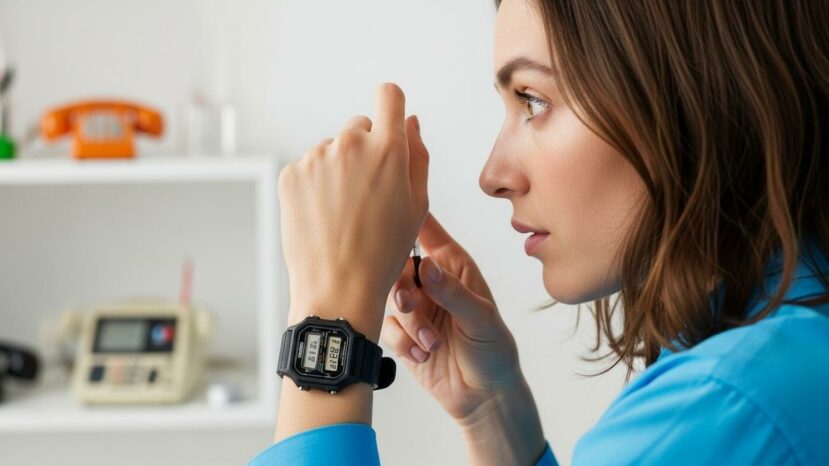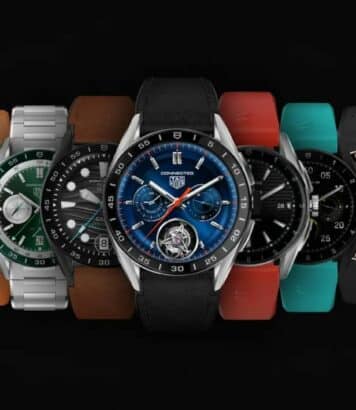Seiko Rotocall Digital returns: the cult watch of the ’80s gets a modern makeover

Between geek heritage and everyday objects, Seiko awakens an affective fibre in fans of LCD watches. The evocation of a model christened “Rotocall Digital” opens a window on a key period, that of the Japanese digitals that left their mark on wrists. Interest in these practical, playful timepieces steeped in history has been revived.
A name that intrigues, a design that speaks for itself
The term “Rotocall” is immediately appealing, as it suggests a gesture, a movement, an interaction. A dedicated chronicle highlights a singular object, designed for the age of telephone numbers and segmented screens. What’s more, the digital dial and side pushers place this model in an era of technological transition. Seiko appears as a pioneering player, always attentive to new uses.
Visually, one imagines a sturdy case, a legible LCD display, and functions centered on time, date and alarm. However, the real value of the object lies in its practicality and retro charm. The angular
On the wrist, the promise is clear: simplicity, direct reading, and a touch of play with time. However, this type of digital watch is just as interesting for the user as it is for the collector. In short, it tells the story of the rise of a connected everyday life… before its time. Seiko anchors a vision that spans the decades.
“A digitale is a little personal dashboard: precise, direct, and more intimate than a smartphone screen.”
Historical landmarks and Japanese innovations
First of all, it’s worth recalling the company’s lifeline. With the
In the 1980s, the spirit of innovation took over. The TV Watch of 1982, the Data 2000 of 1983, then wrist-mounted microcomputers come to mind. Seiko tested new uses, formats and interfaces. What’s more, each piece is part of a chain of tests that nourish today’s watchmaking culture.
- The quartz revolution began in 1969
- First consumer LCD displays as early as 1973
- Useful “gadget” watches in the 1980s
- Watch/tool convergence before today’s wearables
- Technical heritage valued by collectors
What does Rotocall mean to collectors?
The word “Rotocall” evokes functionality linked to action and memory of use. In a collector’s context, it refers to those digitizers designed to simplify everyday gestures. In this way, the object is enhanced by its period coherence and ergonomics. In this sense, Seiko embodies simple, ingenious watchmaking for everyday use.
For the amateur, three criteria count: the condition of the module, the cleanliness of the display and the availability of parts. In addition, the stability of thewater-resistance and the quality of the pushers remain decisive. On the other hand, original bracelets can be fragile. The brand has often used integrated designs, which are practical but time-sensitive.
Market rarity varies according to version and sales area. Also, the presence of a vintage box or manual enhances its appeal. As a result, a functional, coherent model is as pleasing to the eye as it is to the mind. Seiko remains a reassuring signature for those looking for a reliable and endearing digital watch.
Please send us the text or HTML of the article “https://lepetitpoussoir.fr/chroniques/seiko-rotocall-digital/”.
As soon as I receive it, I’ll prepare a list in line with your specifications: brand, exact reference, category, variants, and price if applicable.
Quick facts and probable technical elements
On this type of digitizer, we expect the time, date, alarm and sometimes a chronograph. A basic backlight may also be present, depending on the variant. What’s more, the case often alternates resin and metal, with a screwed or clipped caseback. Seiko favors simple sturdiness and accessible maintenance.
Segment legibility and stack stability weigh heavily on the experience. Also, a change of seals ensures better durability. In short, ergonomics must remain obvious, without complex learning. Seiko cultivates this clarity of use, true to its tool philosophy.
Why this subject matters today
The resurgence of interest in retro digital watches is not just about fashion. Firstly, these watches tell the story of yesterday’s gestures and tools. Secondly, they offer a simple alternative to ubiquitous screens. Seiko serves as a landmark here, as the continuity of its production sheds light on the present.
For the curious reader, this story offers concrete reference points. An intriguing name can be linked to a period, an idea of use, and an engineering culture. What’s more, the affective dimension remains strong, as many grew up with these displays. Seiko has nurtured these memories with robust, sincere products.
Style enthusiasts also see this as fertile ground. On the other hand, the wise thing to do is to check functionality before you buy. Traceability is reassuring, as is documented maintenance. Seiko continues to inspire vocations, between collection and everyday wear.
At a time when we’re talking sustainability, buying and wearing a vintage foxglove makes sense. As a result, the object becomes useful, precise and pleasant to live with. In short, we’ve come full circle: from gesture to memory, emotion still passes through the screen. Seiko allows this history to move forward, without denying its roots.





No comments
Post a comment
Always participate in accordance with the law and with respect for others.